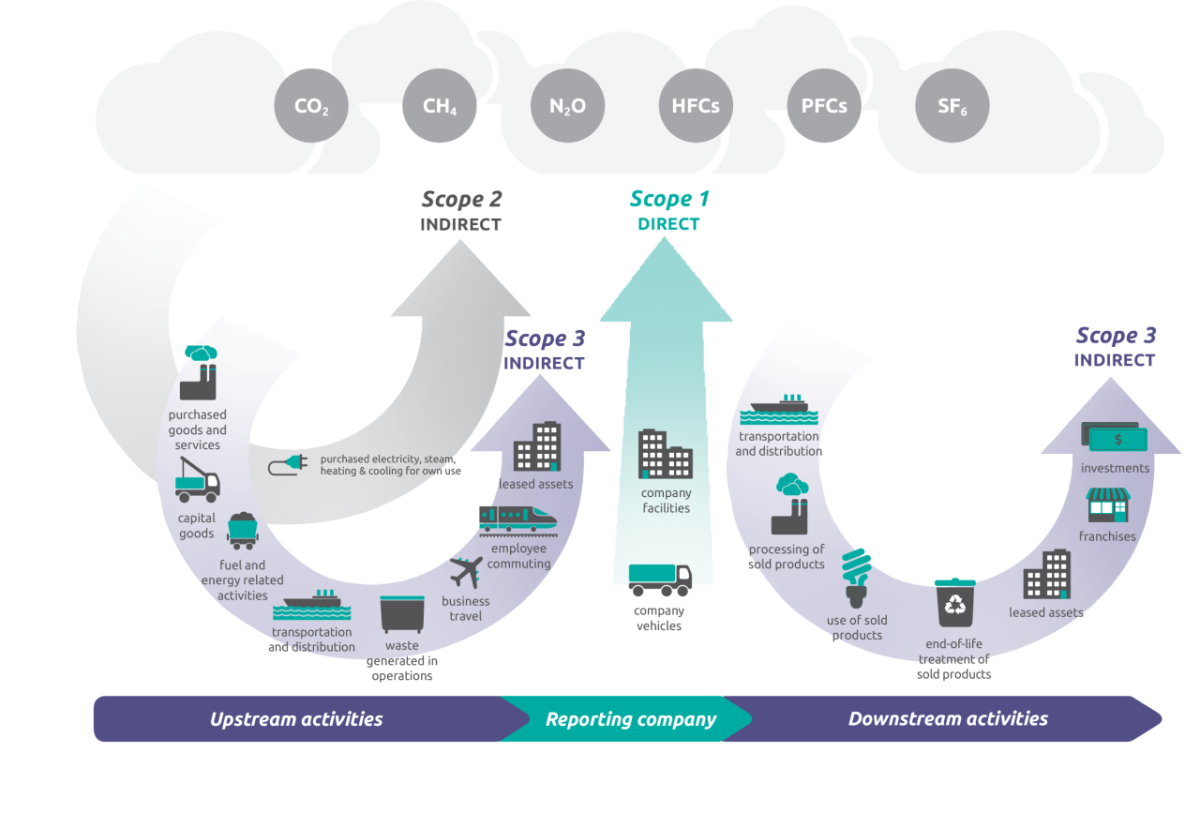Meet the Companies That Are Leading the Way on Scope 3 Emissions

By Randi Mail, Director, Campaigns, Ceres Accelerator for Sustainable Capital Markets
Over the past few months, there has been a lot of buzz about the benefits and challenges to companies of measuring, disclosing, and reducing the greenhouse gas (GHG) emissions in their supply chains – what’s known as scope 3 emissions. The reality is that leading companies are tracking and tackling both upstream and downstream supply chain emissions because it makes good business sense.
With the U.S. Securities and Exchange Commission’s proposed rule to standardize and enhance disclosure of climate risks, and a proposed global standard from the International Financial Reporting Standards’ International Sustainability Standards Board, some skeptics are asking if measuring and disclosing scope 3 emissions is too hard.
Well, maybe it’s time to listen to some companies describe their experiences. At Ceres, we’ve collected stories highlighting corporate leaders who recognize the business case for acting on scope 3. Their experiences illustrate that businesses that measure and disclose climate-related risks and opportunities improve risk management, deepen resiliency, drive innovation, increase competitiveness, and attract investors, putting them on the path to succeed in a low carbon economy.
There is a clear business advantage for companies to understand and manage their scope 3 emissions. Only publicly listed companies - current SEC registrants - are subject to the SEC disclosure rule.
This collection of Scope 3 leadership among major companies should be incredibly helpful to their industry peers and anyone interested in best practices and lessons learned. It features Mars, McCormick, HP, Apple, Unilever, Gap, Ford, General Mills, Ikea, JLL, General Motors, Walmart, AstraZeneca, Moody’s, Etsy, Allbirds, and Everlane. Companies, investors, and policy makers can also find resources from Ceres, World Resources Institute, Science-Based Targets Initiative, CDP, and Guidehouse.
Hear from leading companies on why they are working to address their Scope 3 emissions:
- Mars: “Five years into its Scope 3 work, Mars is assuredly making progress. The company is already working with major suppliers that account for a third of its total emissions, primarily raw material and logistics providers. It has reduced its Scope 3 emissions by 6% compared to 2015 levels over a period in time where the company has seen significant growth.”
- HP: “With our supply chain representing over two-thirds of our emissions, our mandate was clear: To reduce the footprint of our printers, computers, and monitors, we had to reduce the footprint of the components, manufacturing, assembly, and transportation of those items. We have hundreds of suppliers, so we needed to take a data-based approach to this problem. We examined our supply chain data and found that our 30 largest partners were responsible for nearly 80% of the Scope 3 emissions from our directly-contracted-suppliers' operations.”
- Unilever: “We have a CEO who really believes in this commitment. Commitment from the top is essential, and you need to live and breathe the commitment from the top level to make it work... Our operations are only 5 percent of our total carbon footprint. The majority of emissions come from across our value chain, which includes Scope 3 upstream and downstream. About 30% of our total carbon footprint is from our customers. Upstream, we have a greater influence on our suppliers, but downstream we have far less influence on how our customers use our products."
- Ford: “We address Scope 3 by tackling our biggest emissions categories first. Those categories are the use of our vehicles (75 percent of our Scope 3 emissions) and our suppliers’ emissions (17 percent). Everything else will be addressed over time. Would we like to address 100% of our emissions? Absolutely, and we will over time, but our immediate focus is to address our biggest sources first.”
- JLL: “By focusing on Scope 3 emissions, science-based targets push companies to consider emissions throughout their supply chain, from construction to procurement and beyond. For JLL, with over 96% of its emissions arising from the consumption of natural gas and electricity in the real estate managed for clients, collaboration is fundamental. Taking all clients on their own climate action journeys is critical.
- Walmart: “As a large omni-channel retailer with millions of customers worldwide and a global sourcing footprint, Walmart is able to lead by reducing emissions in our operations and supply chain while galvanizing collective action across our industry. We believe a strong climate action strategy will help us manage the physical and transition risks associated with climate change, strengthening the resilience of our business and helping us create value for stakeholders... We focus on achieving our science-based targets for emissions reduction in our global operations and supply chain in ways that strengthen the performance and resilience of our business.”
These corporate leaders understand that tackling value chain emissions makes good business sense. We hope that their leadership inspires their peers to learn from their examples and to act. We urge trade groups and business associations to recognize that their own members are leading the way on measuring and disclosing scope 3 emissions. Investors are seeking the best practices from their portfolio companies, and the public wants to know which companies are doing the most to reduce greenhouse gas reductions and how. Please share these stories. Let’s flip the script.
#WeDoScope3 #ClimateDisclosureNow

